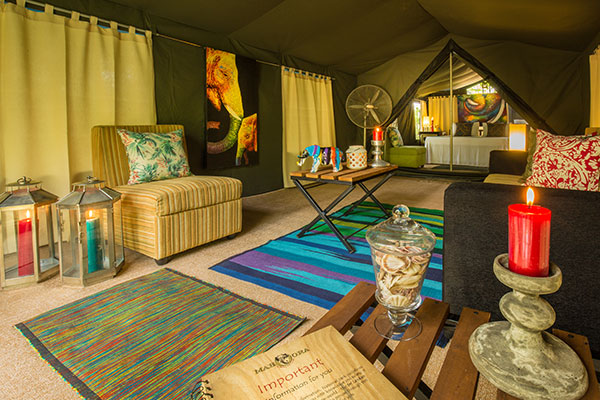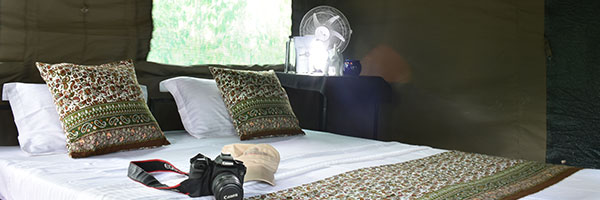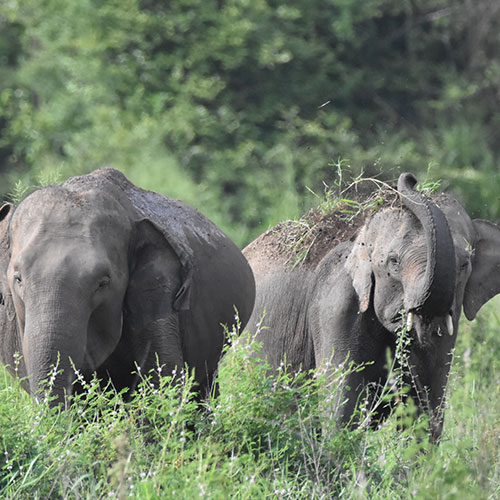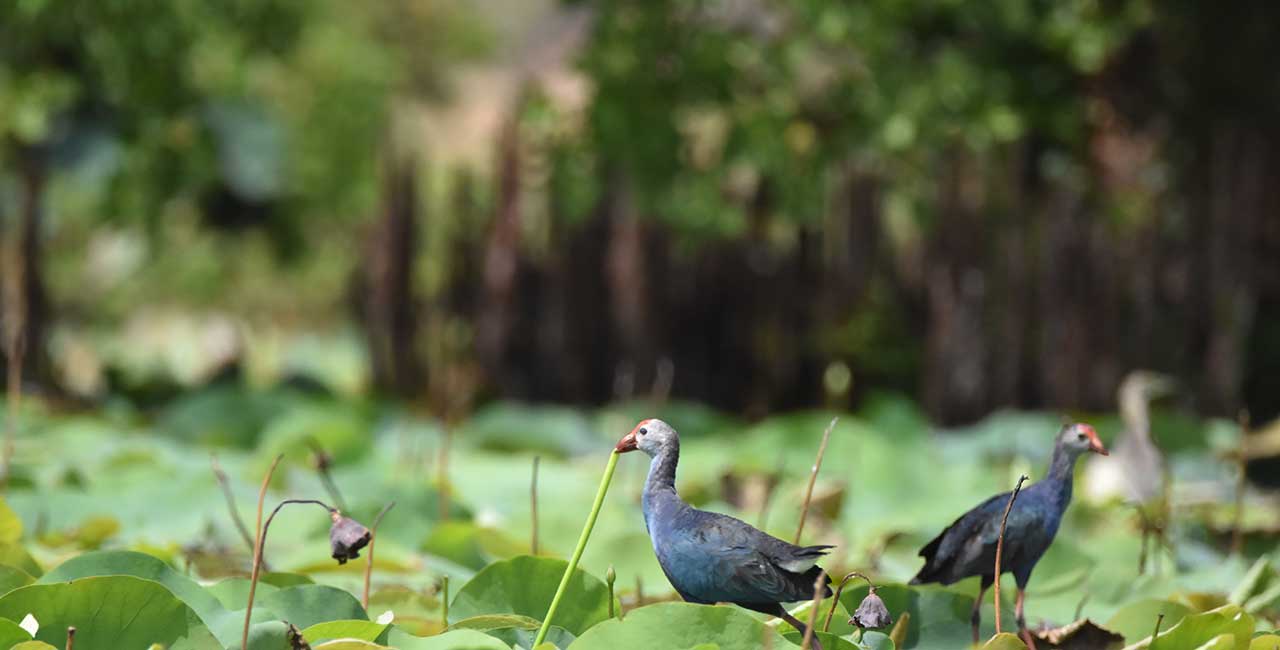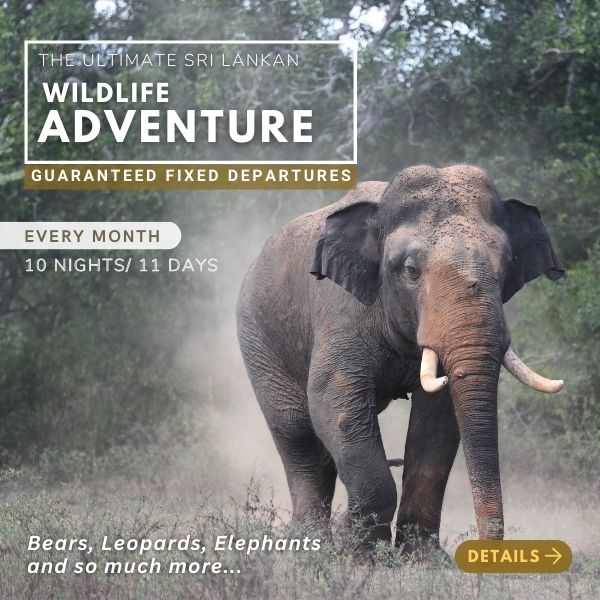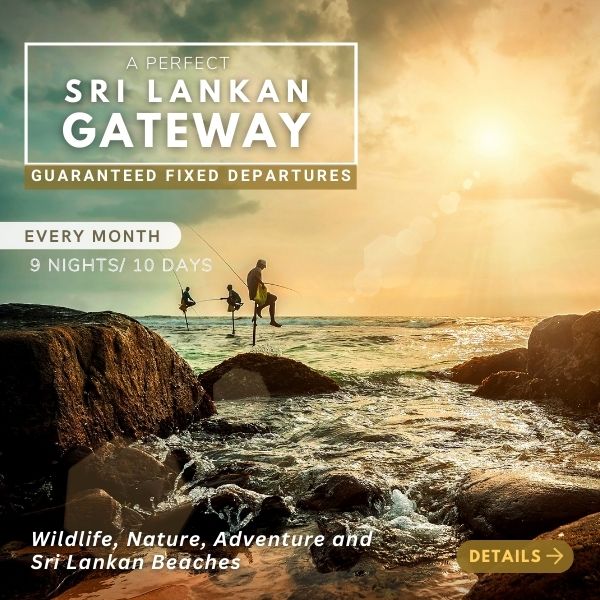Birding and Crocodile Experience at Bundala National Park
Bundala is the only National Park in Sri Lanka where safari-goers get to observe both species of crocodiles that exist on the island. High numbers of Estuarine and Mugger Crocodiles can be seen here.
The Estuarine Crocodile is the largest of all the reptiles; males grow up to 7m in length and can weight even up to 1,200 kilograms, while the females are much smaller in comparison, reaching a maximum length of just 3m.

Mammals at Bundala National Park
Sri Lankan Leopards can also be found in the Park with their food source being the numerous Spotted Deer, Sambar and Barking Deer, although they are not as easy to spot here in comparison to Yala. The endemic Toque Macaque, Common Langur, Jackal, Fishing Cat, Rusty-spotted Cat, Mongoose, Wild Boar, Mouse Deer, Spotted Deer, Sambar Deer and Black-napped Hare are amongst the other mammals which can be sighted on a Bundala safari.

Reptiles & Amphibians at the Bundala National Park
Birdlife at Bundala National Park
Flora at Bundala National Park
Bundala National Park History and Geography
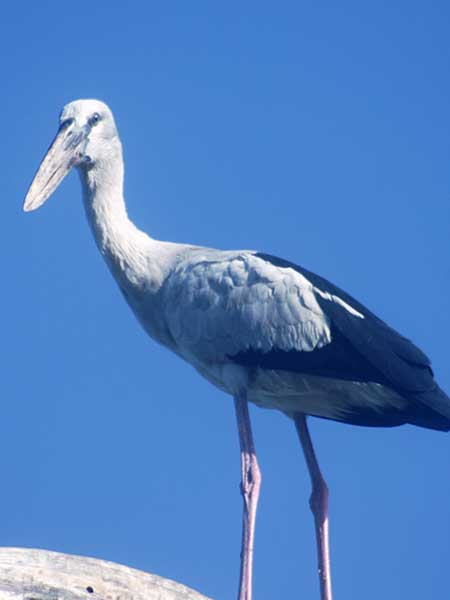
Getting the most out of your Bundala National Park Safari
Climate at Bundala National Park
Best times to visit the Bundala National Park
While the Bundala National Park can be visited throughout the year, December is considered the best month for birding, while August to April is a good season for a fantastic wildlife safari.



